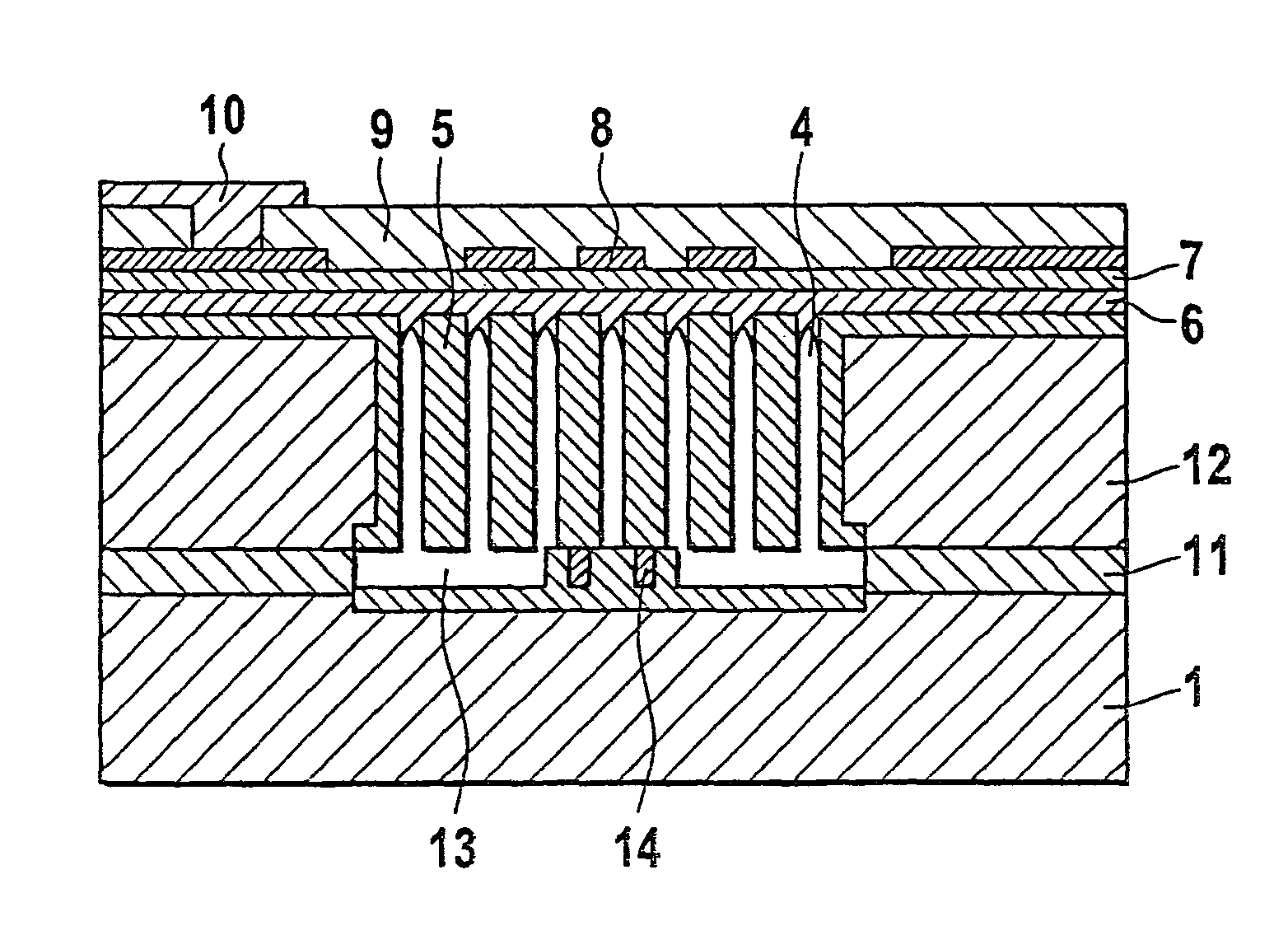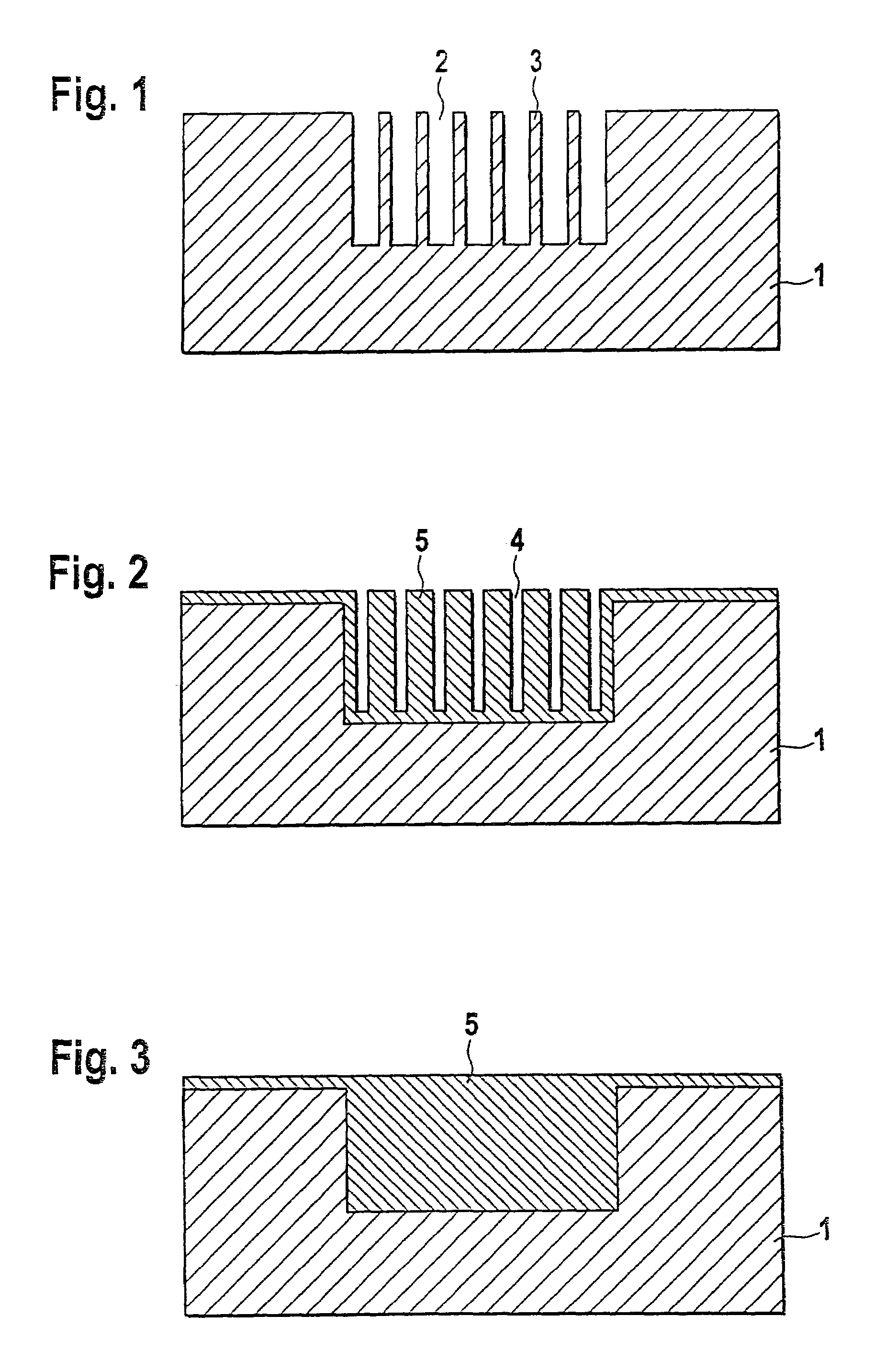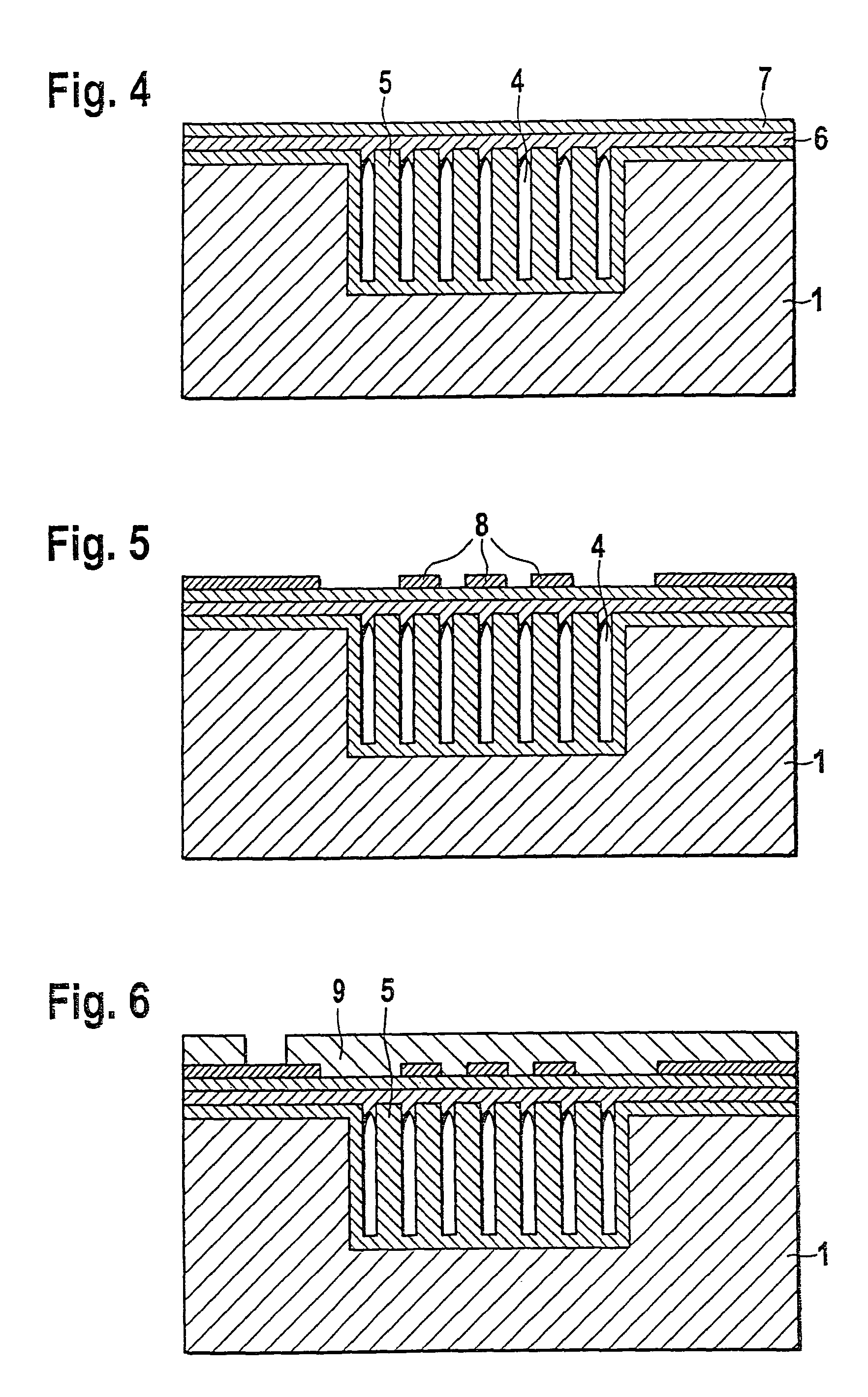Micromechanical mass flow sensor and method for the production thereof
a micro-mechanical and sensor technology, applied in liquid/fluent solid measurement, thermoelectric devices, instruments, etc., can solve the problems of lateral heat outflow, decreased sensor sensitivity, and problems such as porosity, to achieve the effect of thin lands and greater porosity
- Summary
- Abstract
- Description
- Claims
- Application Information
AI Technical Summary
Benefits of technology
Problems solved by technology
Method used
Image
Examples
Embodiment Construction
[0040]FIG. 1 shows a silicon substrate 1 in which grooves 2 have already been produced by etching from the upper side. Similar grooves, albeit only up to approx. 20 μm deep and produced for other purposes, may be referred to in other surface micromechanics systems. The width of lands 3 separating grooves 2 is selected so that upon subsequent thermal oxidation, lands 3 are in all cases completely oxidized. The state achieved thereafter is shown for the situation in which the initial width of grooves 2 was selected so that after complete oxidation of lands 3, there remains between them a crevice 4 shown in FIG. 2. The initial width of grooves 2 may also be selected so that grooves 2 are completely closed up (see FIG. 3).
[0041]In order to produce additional cavities, additional grooves may be etched, from the outset, transversely to grooves 2. In this case lands 3 exhibit interruptions and are made up, strictly speaking, of columnar land elements.
[0042]Thermal oxidation is a relatively...
PUM
| Property | Measurement | Unit |
|---|---|---|
| thicknesses | aaaaa | aaaaa |
| thickness | aaaaa | aaaaa |
| dimensions | aaaaa | aaaaa |
Abstract
Description
Claims
Application Information
 Login to View More
Login to View More - R&D
- Intellectual Property
- Life Sciences
- Materials
- Tech Scout
- Unparalleled Data Quality
- Higher Quality Content
- 60% Fewer Hallucinations
Browse by: Latest US Patents, China's latest patents, Technical Efficacy Thesaurus, Application Domain, Technology Topic, Popular Technical Reports.
© 2025 PatSnap. All rights reserved.Legal|Privacy policy|Modern Slavery Act Transparency Statement|Sitemap|About US| Contact US: help@patsnap.com



